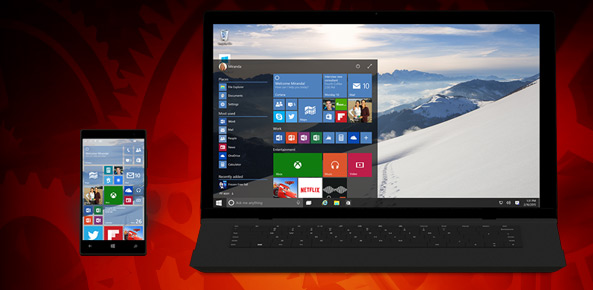Earlier this month we reported that Microsoft and Qualcomm were partnering to produce a “Cellular PC” that would run Windows 10 Mobile with ARM chips. We have since learned that Microsoft could be unveiling this cellular PC concept at the Mobile World Conference in Barcelona in February, 2017.
So the mystery of the Windows 10 “Surface Phone” that we were all talking about ever since the iPhone 7 launch has been solved…somewhat.
SEE: Microsoft and Qualcomm to Create “Cellular PC” With Windows 10 on ARM
It doesn’t really matter what they call the phone. The ‘cellular PC’ or ‘Surface Phone’ tag is just a name. And it’s not likely that they’ll be showcasing such a device at the MWC next February, but might rather try to gain expressions of interest from device makers.
The Importance of a Windows 10 Mobile Device Running Desktop Apps
The important aspects to consider are the implications of having a mobile device being able to run desktop applications. But why would this be important, especially to Microsoft but to all device manufacturers and users at large?
When you think of Microsoft’s chosen target – business users – it makes much more sense. What platforms are the bulk of business software designed for? Desktop. What types of applications are the most powerful and have the most functionality? Desktop. And what’s the preferred platform for corporate executives? Mobile.
But mobile apps are limited in terms of functionality, as you know. Most desktop applications may have a mobile equivalent, but they can hardly be called equal in the real sense of the word. A mobile app typically tends to have fewer features and less maneuverability because mobile devices today just can’t support a full-fledged desktop application.
That’s the real reason Microsoft is taking the device-agnostic route with Windows 10. By leveraging ARM architecture and using x86 emulation, they’re trying to bring a more realistic desktop experience to mobile devices.
SEE: Get a Free Windows 10 Upgrade Today, November Win 10 Adoption Rate Update
That’s just the beginning, however. Will they get to where they want with the cellular PC/Surface Phone? No. Again, it’s just the beginning. In a way, this is a forced move because of the extremely large pool of traditional desktop apps that they want to immediately bring into the mobile ecosystem.
But in the long run, they’ll be looking at licensing this bundled technology to device manufacturers so they can take advantage of the economics of such licenses. To develop devices of their own will only mean expenditure, sales and a profit at the end. But licensing it out will give them a stable revenue stream the way the original Windows family members did.
Google’s Plans are Along Similar Lines, but with a Key Differentiator
Google, on the other hand, is doing the exact opposite with their Andromeda hybrid operating system. They’re trying to fold Chrome OS into Android so they can leverage the massive Android apps ecosystem while holding on to the Chrome OS trump card.
They need to take this route because they don’t have a proprietary OS outside of Chrome OS and Android, and neither are money spinners in terms of licensing because both are essentially open source. They merely take a cut from the apps and in-app purchases on Google Play.
It stands to reason, then, that their only option is to leverage their app store as much as possible. By merging Chrome OS and Android, they can create a cross-device operating system that will run Android apps, thus increasing usage and, thereby, revenues.
Both of these initiatives have the potential to be very successful. For Microsoft, it means the start of a new journey in true mobility, and mass adoption of Windows 10 mobile devices in the enterprise segment. For Google, it means leveraging the massive Android user base to bring a mobile experience into the world of Chromebooks and beyond.
Microsoft will most likely announce its plans at the Mobile World Conference in February. Even if they don’t have a device lined up for production at that point, they’ll be looking at licensing the Windows 10 with ARM tech to OEMs and ODMs at the conference. In turn, that could spawn a new generation of mobile devices capable of running the millions of desktop applications that are available today.
When will that actually happen? Not before 2018 at least, is our guess. There is still a lot of work to be done on the emulation front, like gaming support, for example. So, rather than expect a path-breaking Windows 10 Mobile device to magically appear next year, let’s hope that Microsoft can first break the path that will eventually lead to such devices.
As for a Surface Phone based on the Cellular PC concept, Microsoft may well kick off the trend by launching their own mobile device under the Surface brand name, but late 2017 is possibly the earliest we’ll see of such a device.
Thanks for reading our work! Please bookmark 1redDrop.com to keep tabs on the hottest, most happening tech and business news from around the world. On Apple News, please favorite the 1redDrop channel to get us in your news feed.



